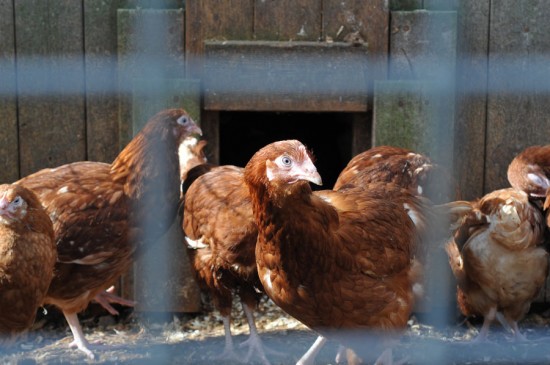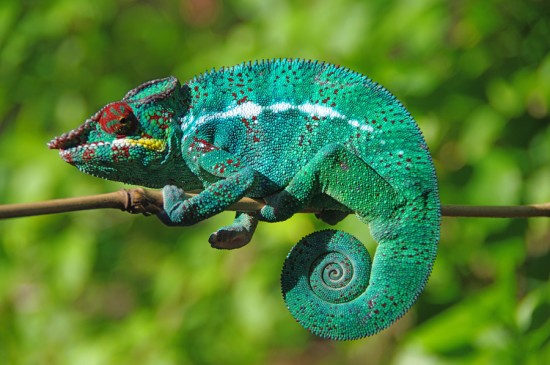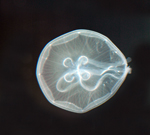
Part of a tropical Caribbean vacation is having the chance to see the flora and fauna of the surrounding ocean. The Caribbean Sea is well known for being one of the most diverse places on the planet. Here are a few whales and dolphins to look for while you laze on the beach.
Risso's Dolphins are found in temperate and tropical oceans, including the Caribbean sea. Adults typically reach 10 feet in length, and weigh between 650 and 1,100 pounds; this makes them the largest dolphin species to have the word 'dolphin' in its name (Orcas, which belong to the same family, are usually referred to as whales). You can spot a Risso's by its large body, which tapers to a narrow back end and tail. They have a bulbous head, which features a vertical crease running down the front; while infants and juveniles have dark colorings around their fins, adults are mostly creamy white all over. While they're shy and rarely approach vessels, Risso's Dolphins do like to surf bow waves!
The Rough-toothed dolphin gets its name from the distinctive irregular ridges on its teeth, which help them catch and eat various houndfish, squid, octopi, and other small fish species. They're relatively large, weighing in at between 200 and 340 pounds, and reaching up to 9 feet in length. Rough-toothed dolphins can be identified by their conical heads and slim noses; unlike other species of dolphins their foreheads do not bulge forward. As social animals, they travel in pods of between ten and twenty individuals, but have occasionally been spotted swimming alone. Rough-tooth dolphins will also swim with schools of other dolphin and whale species.
If you're into rare cetaceans, then you'll have to look for the Pygmy killer whale while on your travels. This dolphin has many characteristics in common with Orca killer whales, hence its name; in fact, the Pygmy is the smallest animal that has 'whale' in its common name. It is just slightly larger than an adult man, and it has a rounded, beak-less head with white lining around the mouth. Pygmies are usually quite dark-colored, and sightings are sometimes mistaken for other species. The schools they travel in average in size of about 20 members. Pygmy Killer Whales earn their 'killer' nickname better than their larger counterparts; they've been shown to be quite aggressive against other dolphin species, and even each other. Needless to say, observe these creatures from a distance!
But by far the most incredible thing to see in the waters off the coast of the Dominican is the West Indian manatee. This species reaches about 10 feet in length, weighs between 400 and 1,300 pounds, and is colored grey or brown. It lives exclusively in the shallows of the Caribbean, though it has been occasionally found as far north as Massachusetts and in some fresh water rivers. The now-extinct Stellar's Sea Cow is only bested by this largest living manatee species.
Manatees give birth to one calf at a time, and nurse them for about 2 years. The mother and child travel together; the males contribute no parental care, although they congregate in mating herds. One subspecies, the Florida manatee, has been observed to live up to 60 years in the wild. The Antillean manatee, another sub-species, is found around the Caribbean islands, eating plants, sea grasses, and small invertebrates. These creatures are very agile in the water, and have been observed doing somersaults and rolls, as well as swimming upside-down.
 Caring For Your Ex-battery Hens
Caring For Your E
Caring For Your Ex-battery Hens
Caring For Your E
 Chameleons - The Amazing Technicolour Pet!
Chameleons - The
Chameleons - The Amazing Technicolour Pet!
Chameleons - The
 Is It Ever A Good Idea To Give Your Child A Pet For Christmas?
Is It Ever A Good
Is It Ever A Good Idea To Give Your Child A Pet For Christmas?
Is It Ever A Good
 Hypertrophic Cardiomyopathy In Cats Explained
Hypertrophic Card
Hypertrophic Cardiomyopathy In Cats Explained
Hypertrophic Card
 Jellyfish as Pets
A Jellyfish is a soft-shelled marine creature with a body l
Jellyfish as Pets
A Jellyfish is a soft-shelled marine creature with a body l
Copyright © 2005-2016 Pet Information All Rights Reserved
Contact us: www162date@outlook.com